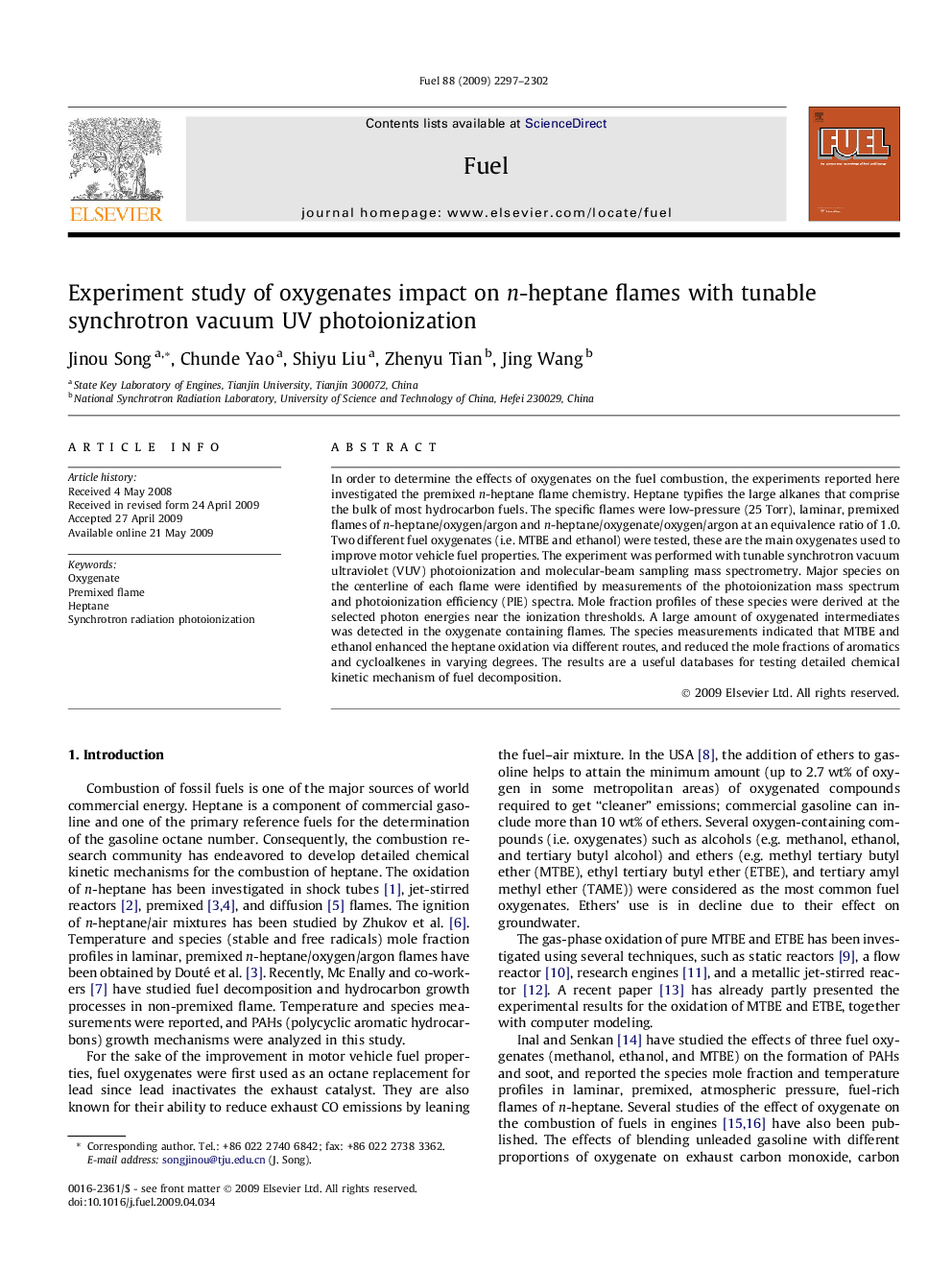| Article ID | Journal | Published Year | Pages | File Type |
|---|---|---|---|---|
| 206722 | Fuel | 2009 | 6 Pages |
In order to determine the effects of oxygenates on the fuel combustion, the experiments reported here investigated the premixed n-heptane flame chemistry. Heptane typifies the large alkanes that comprise the bulk of most hydrocarbon fuels. The specific flames were low-pressure (25 Torr), laminar, premixed flames of n-heptane/oxygen/argon and n-heptane/oxygenate/oxygen/argon at an equivalence ratio of 1.0. Two different fuel oxygenates (i.e. MTBE and ethanol) were tested, these are the main oxygenates used to improve motor vehicle fuel properties. The experiment was performed with tunable synchrotron vacuum ultraviolet (VUV) photoionization and molecular-beam sampling mass spectrometry. Major species on the centerline of each flame were identified by measurements of the photoionization mass spectrum and photoionization efficiency (PIE) spectra. Mole fraction profiles of these species were derived at the selected photon energies near the ionization thresholds. A large amount of oxygenated intermediates was detected in the oxygenate containing flames. The species measurements indicated that MTBE and ethanol enhanced the heptane oxidation via different routes, and reduced the mole fractions of aromatics and cycloalkenes in varying degrees. The results are a useful databases for testing detailed chemical kinetic mechanism of fuel decomposition.
